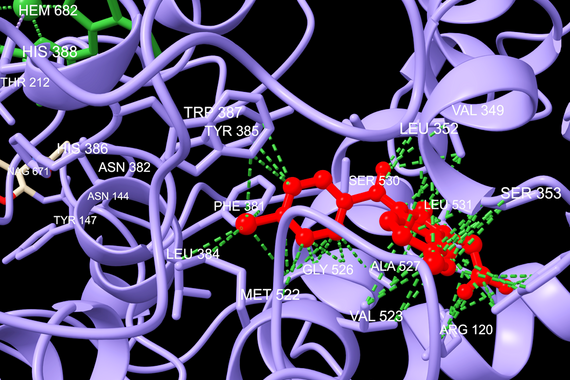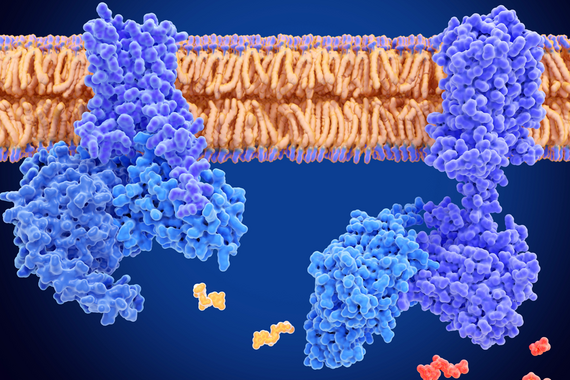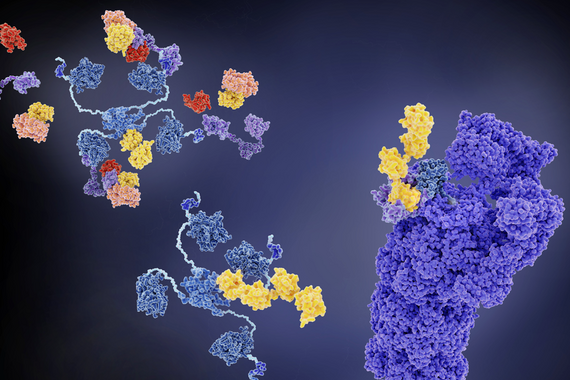-
Die Universität
- Herzlich willkommen
- Das sind wir
- Medien & PR
-
Studium
- Allgemein
- Studienangebot
- Campusleben
-
Forschung
- Profil
- Infrastruktur
- Kooperationen
- Services
-
Karriere
- Arbeitgeberin Med Uni Graz
- Potenziale
- Arbeitsumfeld
- Offene Stellen
-
Diagnostik
- Patient*innen
- Zuweiser*innen
-
Gesundheitsthemen
- Gesundheitsinfrastruktur
Organisation & Teams
In BioMolStruct we assemble a unique group of researchers from three Universities in Graz, funded by the FWF doc.funds program. Our program will spearheads the growing demand for scientists in integrative structural biology with a solid experimental and theoretical background in molecular biology, biophysics, and structural biology. The program sustains specialized education with deep knowledge in integrative structural biology of dynamic biomolecules and a broad methodological portfolio to address them. To tackle the major challenge of combining complementary structural biology techniques in an integrative approach into one training program, BioMolStruct offers highly competitive thesis projects covering basic research embedded in (patho)physiological contexts.
All three participating universities support BioMolStruct, from cutting-edge research infrastructure to integration into the institution's regular activities. Moreover, all universities provide additional own funds for ongoing operations, institutional anchoring of the program as well as substantial, direct financial support.
Research Teams

Dynamic Ligand Binding
The PhD candidates study the intricate role of internal dynamics in regulation of ligand binding. The catalytic power of an enzyme, for example, depends on a significant reduction of the free energy barrier for the chemical reaction. Conformational dynamics of the enzyme determine catalytic activity, including substrate-binding affinity, optimal alignment of substrates, activation of a substrate’s functional groups, and dehydration of active sites.

Lipid-Protein Interface
A large number of (patho)physiological functions of cellular membranes in signaling and metabolism is attributed to specific or unspecific (membrane-mediated) lipid-protein interactions. Note also that more than 60% of drugs target membrane proteins, underlining the pressing need to interrogate the dynamic structural function of membrane proteins, which is evidently coupled to its surrounding lipid matrix. Thus, the PhD candidates aim at studying the intricate role of dynamics at the lipid membrane-protein interface.

Transient biomolecular interactions
PhD candidates and groups join their complementary biological and methodological expertise to investigate the fundamental mechanisms driving weak and transient biomolecular interactions. Such interactions play a crucial role in various cellular processes including signaling, transcription, and chaperoning. Distortions of these interactions are a hallmark of many human diseases, such as cancers and neurodegeneration.
- Walter Keller
- Tobias Madl
- Iva Pritisanac
- Andreas Winkler
- Klaus Zangger
Shared Infrastructure
X-ray Crystallography/Small-Angle X-ray Scattering
- MetalJet-SAXS/X-ray diffraction platform (FFG Infrastructure/BioTechMed Shared Infrastructure)
- SAXS with sealed tube/microfocus
- Crystallization robots (Mosquito Xtal3, Oryx8)
- Thermo-regulated crystallization closets
NMR Spectroscopy
- 700 MHz with cryo-platform
- 600 MHz with SampleJet autosampler (HRSM/BioTechMed Shared Infrastructure) and IVDr setup (Styria Zukunftsfonds)
- High-throughput pipetting robot (Andrew Alliance)
Cryo-EM
- In-house transmission electron microscope (TEM) with a cryo-stage, a high-resolution detector, a glow-discharge unit and a GP2 automatic plunge freezer (HRSM/Electron Microscopy Network Graz-Graz48)
Structural Mass Spectrometry (MS)
- High resolution ESI-Q-TOF-MS for hydrogen deuterium exchange measurements (HDX-MS) and native MS analyses (Styria Zukunftsfonds)
Biophysical Equipment
- Isothermal titration calorimetry (VP-ITC, iTC200)
- Differential Scanning Fluorimeter/Calorimeter (VP-DSC)
- Fluorescence Spectrometer/Plate Reader (Clariostar Plus)
- Circular Dichroism-Spectroscopy (NAWI Graz Core Facility)
- Atomic Force Microscopy, Nanoparticle Tracking Analyses (HRSM/PaLab)
- Size exclusion chromatography – Multi-angle light scattering
- Dynamic Light Scattering (SpectroLight 610)
Specialized Labs at Med Uni Graz, TU Graz, and University of Graz
radionuclide labs, S2/S3 cell culture facilities, flow cytometry/sorting, next generation sequencing, state-of-the-art MS, high-resolution fluorescence microscopes
Computing Infrastructure
CyVerse-Graz, Med Uni Graz, TU Graz, and University of Graz computing clusters (HRSM program)

Scientific Advisory Board
The scientific advisory board has been set up for external monitoring to assess the quality and the progress of the candidates' research projects. The members of the scientific advisory board are invited to join the yearly retreats to provide feedback for the students, the faculty and for improvement of the entire program. Their input will be an essential part in ensuring that BioMolStruct will serve as a gold standard for PhD education in integrative structural biology.
- Jonas Emsley (Macromolecular Crystallography, Faculty of Science, School of Pharmacy, University of Nottingham, UK)
- Birte Hoecker (Protein Design, Faculty of Biology, Chemistry and Earth Sciences, University of Bayrouth, Germany)
- Sophie Zinn-Justin (NMR, Institute for Integrative Biology of the Cell I2BC, Université Paris-Saclay, Gif-sur-Yvette, France)


